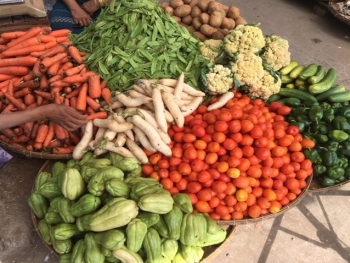Making Nutritious Diets More Affordable: Findings from a Cost of Diet Assessment in West Singhbhum, Jharkhand, India
Findings from the Cost of Diet Assessment in West Singhbhum, Jharkhand, India
Abstract
Background: India bears a disproportionate burden of undernutrition. Access to an affordable, nutritious diet is one of the critical challenges. There is a need to assess the cost of a nutritious diet and find ways to understand and minimise the affordability gap through a comprehensive approach.
Objective: The present study was conducted in the West Singhbhum district of Jharkhand, India. Its objective was to find out the cost of various diets, and their affordability, based on households’ accounting for their total food expenditure, and assessing the coverage of essential governments’ nutrition-specific interventions to use a model for suggesting ways to minimise the affordability gap. We also estimate the potential impact of nutrition-sensitive programmes on household food affordability.
Methodology: The study employed the Cost of the Diet (CotD) methodology, a mixed-method, cross-sectional assessment, where the research team conducted surveys in 16 markets, 12 focus group discussions (FGDs) and 96 individual interviews (IDIs). Additionally, 434 household-level surveys were conducted to understand income, expenditure patterns in the localities and uptake of key nutrition-sensitive interventions. Secondary information from the 68th round of the National Sample Survey 2012 were used to assess rural Jharkhand’s non-food expenditure (NFE). Data were analysed primarily using the Save the Children’s Cost of the Diet software version 2.5.2.
Results: The cost of the diet increased with an increase in the diet quality – from a basic energy-only diet costing INR 33,892 ($505.85)[1] per year for a standard household with 6 members to a food-habit nutritious diet (FHAB) costing INR 70,627 ($1054.13) per year. More than half of the sampled households could not afford a nutritious diet. The poorest quartile was spending 56.8% of income on food, compared to 33.7% for the richest quintile.
Conclusion: The cost of a FHAB diet should be used as a benchmark to track the progress of beneficiary groups in upcoming socio-economic assessments. Changes in the affordability gap should be observed to assess whether new initiatives have worked. Optimal coverage of existing nutrition-specific and nutrition-sensitive programmes has the potential to reduce the cost of a FHAB nutritious diet by up to 30%.
[1] $1=INR 67 (The exchange rate at the time of data collection, December 2019)

Authors retain all copyrights. In making a submission to World Nutrition, they are certifying that all material is theirs except quotations, as indicated, and that they have obtained permission for any photos, tables, or graphics taken from other publications or websites.




